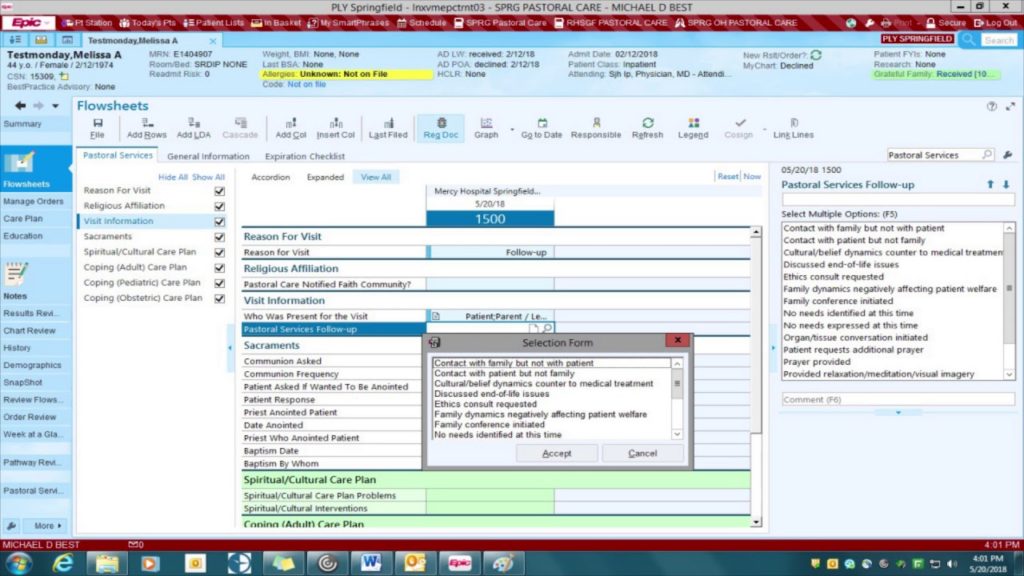First, what is Value-Based Care?
Value-based care is a relatively new way of thinking about healthcare that focuses more on keeping patients healthy and less on the number of services provided. Instead of doctors and hospitals getting paid based on how many tests or treatments they offer, they earn more when their patients stay healthy and the care they provide is truly effective. This approach not only aims to improve the health of patients but also tries to reduce unnecessary healthcare costs by emphasizing quality over quantity.
At first sight, it sounds very reasonable and fair, right? Well, in practice, there are some challenges to make this work:
Insufficient Data Availability:
Not having enough data makes it hard to put value-based care into practice because it can lead to less informed decisions, makes it difficult to track how well treatments are working, and complicates the process of figuring out which patients need more attention.
This is particularly problematic for preventive care, a key focus of value-based care aimed at keeping people healthy and reducing costly hospital visits. To be able to identify early risk factors and implement timely interventions, practices need to increase the data they collect and collect it more comprehensively.
Many healthcare providers struggle with not having enough relevant data at their disposal. This scarcity of data can stem from several issues, such as incomplete patient records, lack of interoperability between different healthcare systems (EHRs), and inconsistent data collection practices.
Poor User Interface Design:
Healthcare professionals frequently struggle with clunky and unintuitive digital interfaces that complicate rather than simplify their workflows. This can lead to frustration, reduced efficiency, and even data entry or retrieval errors.

Lack of Predictive Capabilities:
Despite the potential of AI and machine learning, many healthcare providers do not have access to predictive tools that can forecast patient risks and outcomes. This limits their ability to implement preventative care measures effectively.
Digital Products to the Rescue
Product crafting combines user-centric design, technology, and targeted outcomes to tackle pressing healthcare challenges effectively. Value-based care (VBC) and product crafting share a fundamental principle: Both are patient/user-centric, focusing on the quality of outcomes rather than the quantity of treatments or features. Just as VBC prioritizes improving patient health outcomes over the number of medical interventions, effective digital products emphasize delivering real, tangible benefits to users, rather than merely adding numerous features.
Let’s dive in on how this approach can specifically address issues related to data management, user experience (UX), and AI-driven machine learning (ML):
Getting and sharing the data
The fragmentation of healthcare information systems often results in data silos where information is stored in incompatible formats across various platforms. Additionally, patient data privacy regulations can restrict the free flow of information, complicating the process of data aggregation.
💡 Solutions:
- Utilizing open APIs to connect different sources of information is crucial. These APIs facilitate the seamless exchange of data across various platforms while ensuring that all interactions comply with data privacy and regulatory standards. This approach helps break down data silos and promotes a more unified healthcare information ecosystem.
- Facilitating Data Entry for Physicians: Recognizing the hectic nature of physicians’ workdays, it is essential to make data entry as straightforward and flexible as possible. Leveraging technologies that support alternative input methods, such as voice recognition and video for note-taking, can significantly reduce the burden on physicians. Additionally, enabling data input across multiple devices ensures that physicians can update and access patient information on-the-go, thereby improving efficiency and reducing delays in care.
- Incorporating Patient-Reported Outcomes (PROMs) into the data collection process, particularly through telehealth technologies, offers a direct and efficient method for gathering patient data. This not only helps in capturing the patient’s perspective on their health status and treatment outcomes but also enhances the overall data pool available for improving patient care.
Better user experiences for better patient experiences
Many healthcare applications are developed without sufficient input from end-users, leading to software that may not meet the actual needs of healthcare providers. Often, developers focus on technical features over usability, which can make these tools less practical for everyday use. This problem specially impacts handling patient data effectively, making it difficult for providers to track outcomes or measure care effectiveness, crucial aspects of value-based care.
💡 Solutions:
- Put UX professionals working directly with the end-users—doctors and patients—to understand their needs and pain points firsthand. This collaboration is crucial for designing interfaces that are not only functional but also intuitive and tailored to the specific workflows of healthcare providers and patients. By involving users in the design process, from initial concept through iterative testing and refinement, products are more likely to meet the practical demands of daily medical practice.
- The importance of this approach grows exponentially when dealing with large volumes of data. Effective visualization of this data is critical; UX designers and engineers must apply principles of Information Architecture and data visualization to ensure that information is presented in a clear, structured, and contextually appropriate manner. This helps in avoiding cluttered screens and slow interfaces, which can impede the efficiency of medical professionals.
An effective predictive ML solution
Developing accurate predictive models for value-based care requires vast amounts of high-quality data and significant computational resources. There is often a lack of expertise within healthcare organizations to develop and maintain these advanced AI systems. Not having such predictive models poses a challenge for value-based care, as it limits the ability to anticipate patient outcomes and effectively intervene before conditions worsen.
We’ve discussed the importance of having the right data and the benefits of a well-designed user interface that enables clear visualization and actionable insights. Now, it’s crucial to leverage machine learning to predict outcomes, enhancing the proactive capabilities of healthcare providers in managing patient care under the value-based care framework.
💡 Solutions:
- Adopting a user-centered AI approach is crucial for ensuring that artificial intelligence is applied effectively within healthcare. This strategy starts by deeply understanding the challenges faced by users, then aligns AI applications to address these specific issues. By concentrating on user needs first, this approach helps to ensure that AI is not just used because it’s trendy or because machine learning expertise is available, but rather to genuinely solve meaningful problems. This focus prevents the misuse of AI technologies for superficial reasons and guides their integration in ways that truly benefit patients and healthcare providers.
To achieve this, mixed teams of Health Experts, ML experts, UX designers, and product specialists are essential. These interdisciplinary teams collaborate closely throughout the phases of discovery, delivery, and refinement, combining their diverse expertise to develop AI solutions that are not only technologically advanced but also intuitive and directly aligned with improving patient outcomes and operational efficiency in healthcare settings.
Frameworks like the AI design sprint are great tools to align the team in the early stages of AI product development.
Conclusion
The shift to value-based care introduces both challenges and opportunities for healthcare transformation. Leveraging digital products that focus on user-centric design, effective data management, and AI-driven analytics is key to addressing these challenges. These technologies not only improve healthcare delivery efficiency and effectiveness but also align closely with the goals of value-based care—prioritizing patient outcomes and operational efficiency. As the healthcare landscape continues to evolve, integrating these innovative solutions will be crucial for achieving sustainable healthcare improvements and better patient care.
